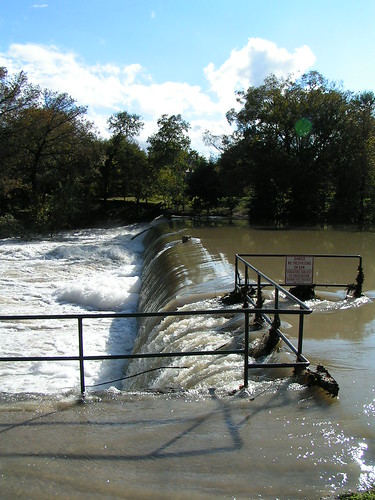 When a person participates in social media something happens. You can call it drinking the Kool Aid, or the echo chamber effect. Whatever you call it, something shifts in the perception of those that participate. If you also happen to make your career in public relations, marketing or a number of other related disciplines, you also start to clearly see the value of this two-way communication model. You start to see how it could help you with your work or clients.
When a person participates in social media something happens. You can call it drinking the Kool Aid, or the echo chamber effect. Whatever you call it, something shifts in the perception of those that participate. If you also happen to make your career in public relations, marketing or a number of other related disciplines, you also start to clearly see the value of this two-way communication model. You start to see how it could help you with your work or clients.
Trouble is that those that don't participate, and frankly have no interest in doing so, don't see it. My colleague Geoff Livingston calls this gap in understanding a chasm, and makes a call for evangelism. I say that we must be catalysts for change, which is much quieter, but just as powerful as evangelism.
I agree that we have to bridge understanding, but I think that the better analogy that that which evangelism evokes would be that of a leaky dam.
Let me explain.
Drip, Drip, Drip
 When a dam starts to fail, it usually doesn't happen all at once. First, there is a leak. The water runs through that leak, weakening the structure. Eventually the dam breaks.
When a dam starts to fail, it usually doesn't happen all at once. First, there is a leak. The water runs through that leak, weakening the structure. Eventually the dam breaks.
It is the same with change in business.
First, there are the drips, the businesses that adopt new ways of doing things, a more conversational model for instance.
Over time these drips will reach a critical mass and the dam will burst.
In my experience so far, my clients start to adopt social media tactics first, they are unconverted but they see some value in one aspect.
By adding in a few social media tactics at a time, they start to get the power of the medium and they tend to add a second, then a third element. Soon, they are converts.
Remember the Baby in the Bath Water?
I think that they only way toward success is to embrace the new model of communication without throwing out all that has come before. It may be trite, but “don't throw the baby out with the bath water” applies perfectly to my water analogy.
To understand our future, we must study the past. We must separate what works from what doesn't. As Jeremy Pepper pointed out today on Twitter:
I don't have that [social media practitioner] on my resume, as it's limiting. its just ONE tool of a GOOD PR person's repertoire.
Social media is not the answer to every business problem, and by suggesting it as such, we shoot ourselves in the foot. It makes us seem like miracle pill pushers.
On the other hand, the two-way model of communication is a revolution for the typical push out and collect the money mindset. It needs to be on the table as a possibility.
Integrate to Mainstream
So how to do we do this? By making sure that the social media aspects of a public relations campaign are integrated into the mix. Don't break it out in the strategic planning (and billing) as an add on. If it makes sense for a campaign, it should be recommended within the strategic communications plan.
When I do this, it seems the client is much quicker to adapt. Why? Because they see the clear value.
The truth is, for most of us immersed in the social media com munity as well as in public relations, it is fun to do this stuff. But we must realize that it is only a part of what we must accomplish for our organizations and clients.
munity as well as in public relations, it is fun to do this stuff. But we must realize that it is only a part of what we must accomplish for our organizations and clients.
To get to do more of the “fun” stuff, I propose that it takes painstakingly and creatively marrying it to a holistic strategy that includes a lot of old school with the new.
Remember the drip theory.
Progress is achieved by the relentless drip of water weakening the established structure. When the dam finally gives way it looks like a revolution, but it really happened just one drip at a time.
Be a drip. It really works.
tags: Social+Media, Drip+Theory, PR, Public+Relations